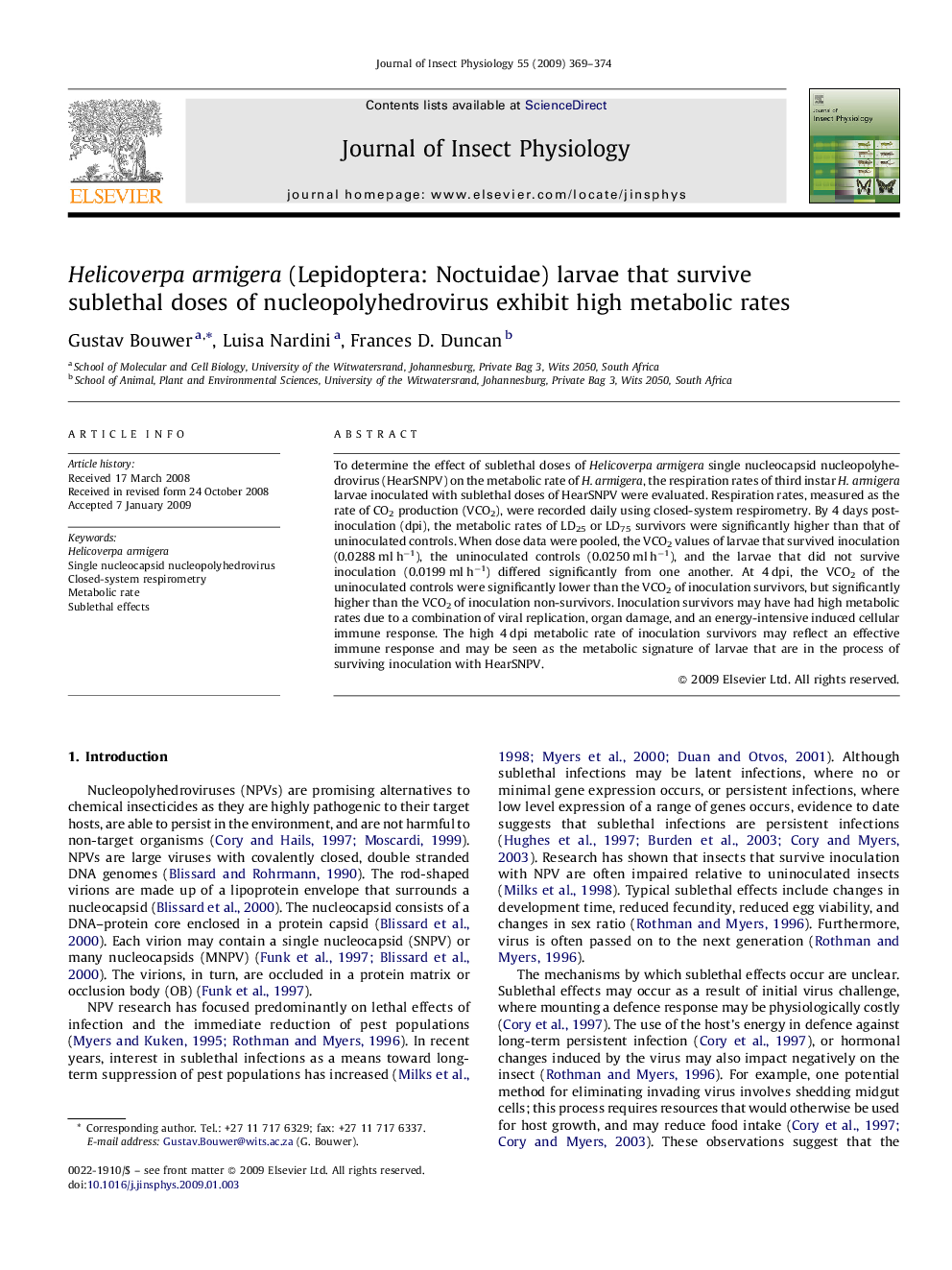| Article ID | Journal | Published Year | Pages | File Type |
|---|---|---|---|---|
| 2841143 | Journal of Insect Physiology | 2009 | 6 Pages |
To determine the effect of sublethal doses of Helicoverpa armigera single nucleocapsid nucleopolyhedrovirus (HearSNPV) on the metabolic rate of H. armigera, the respiration rates of third instar H. armigera larvae inoculated with sublethal doses of HearSNPV were evaluated. Respiration rates, measured as the rate of CO2 production (VCO2), were recorded daily using closed-system respirometry. By 4 days post-inoculation (dpi), the metabolic rates of LD25 or LD75 survivors were significantly higher than that of uninoculated controls. When dose data were pooled, the VCO2 values of larvae that survived inoculation (0.0288 ml h−1), the uninoculated controls (0.0250 ml h−1), and the larvae that did not survive inoculation (0.0199 ml h−1) differed significantly from one another. At 4 dpi, the VCO2 of the uninoculated controls were significantly lower than the VCO2 of inoculation survivors, but significantly higher than the VCO2 of inoculation non-survivors. Inoculation survivors may have had high metabolic rates due to a combination of viral replication, organ damage, and an energy-intensive induced cellular immune response. The high 4 dpi metabolic rate of inoculation survivors may reflect an effective immune response and may be seen as the metabolic signature of larvae that are in the process of surviving inoculation with HearSNPV.
